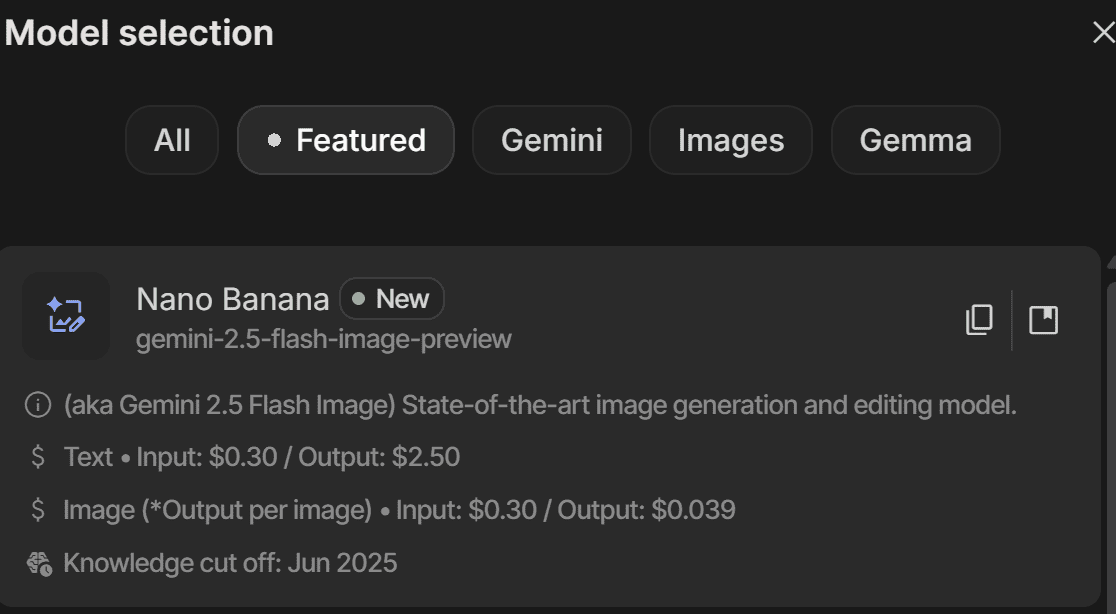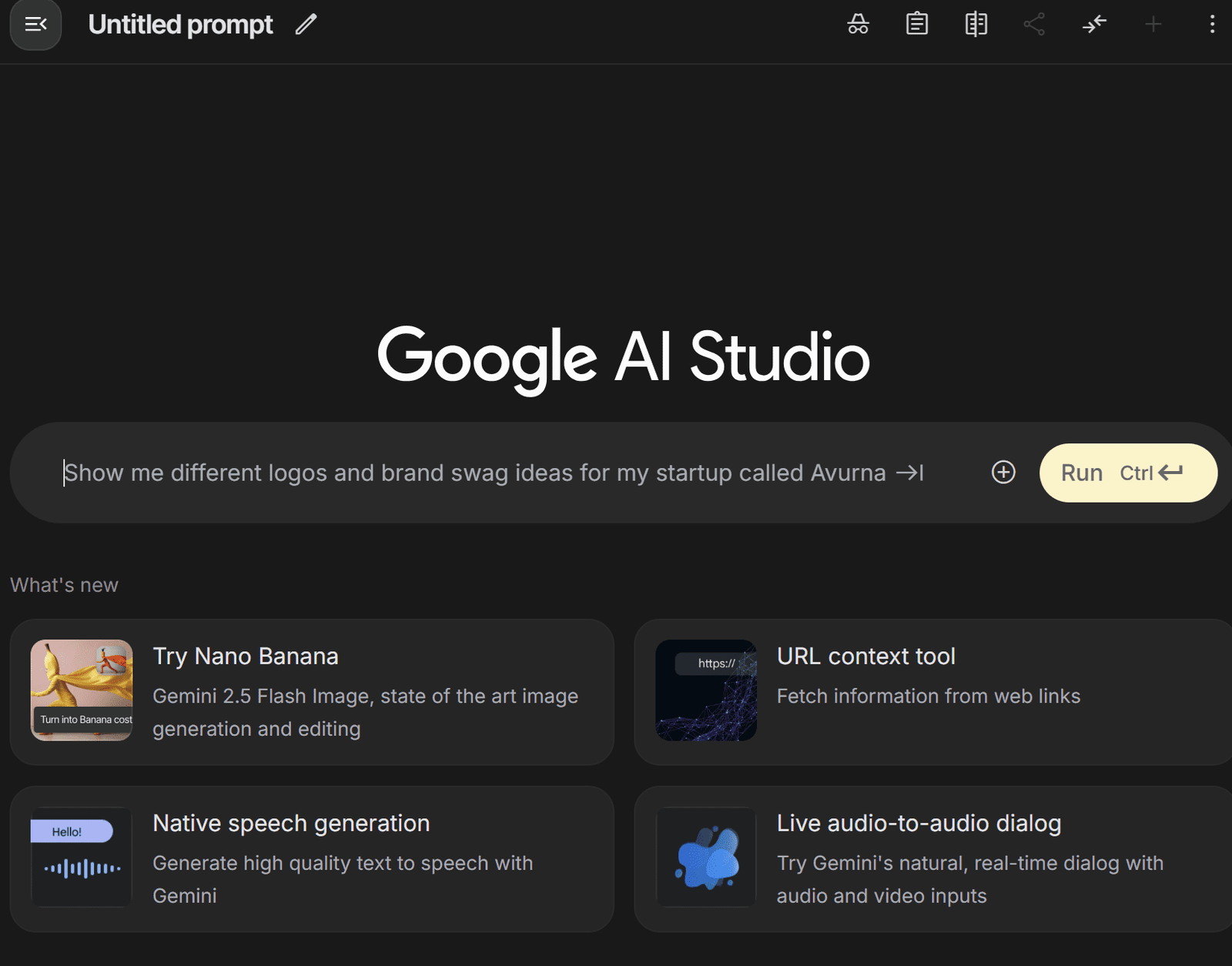Jobs & Careers
10 Free Online Courses to Master Python in 2025


Image by Author | Canva
It’s not necessary to go into debt if you want to master Python. Many online courses are free. When researching for this article, I was honestly surprised by the quality and the choice of free online Python courses. These are my recommendations.


# 1. Python Full Course for Beginners (Dave Gray)
- Platform: YouTube
- Level: Beginner
- Why Take It: Ideal if you’re starting from zero and want a single video to build a strong foundation.
What You’ll Learn: This course by Dave Gray covers the following topics:
- Core Python syntax and logic: Variables, data types, operators, conditionals, loops, and user input.
- Functions and data: Functions, scope, recursion, lambda functions, and common data structures like lists, dictionaries, tuples, and sets.
- File and module operations: Reading/writing files, using external modules, command-line arguments, and setting up virtual environments.
- Object-oriented programming (OOP): Classes, objects, exceptions, and a mini-project to apply OOP concepts.
- Hands-on coding practice: Challenges throughout the course to reinforce what you learn.
At the end of the video, there’s also a final project for you to complete, where you’ll build a web app in Flask.
# 2. Learn Python – Full Course for Beginners (freeCodeCamp)
- Platform: YouTube
- Level: Beginner
- Why Take It: It’s a 4-hour crash course with no fluff, just straight-to-the-point explanations of essential Python topics for beginners.
What You’ll Learn: This course explains the following concepts:
- Python fundamentals: Variables, data types, strings, numbers, user input, and basic control flow (if, loops, comparisons).
- Data structures and functions: Lists, tuples, dictionaries, functions, return values, and nested structures.
- Projects and games: Build interactive programs like calculators, Mad Libs, guessing games, and quizzes.
- Files, modules, and environment setup: Read/write files, use modules and pip, and work with PyCharm and the Python interpreter.
- Object-oriented programming: Create classes, use methods, apply inheritance, and organize code using OOP.
- Error handling and comments: Write cleaner, more robust code with try/except and inline documentation.
# 3. Python Full Course (Bro Code)
- Platform: YouTube
- Level: Beginner
- Why Take It: Bro Code covers the Python basics in a fast-paced, no-nonsense format. His visual examples and short exercises make it easy to follow.
What You’ll Learn: This course teaches you:
- Core Python programming: Variables, type casting, user input, math operations, string methods, indexing, conditionals, loops, and logical operators.
- Functions and advanced syntax: Function arguments (*args, **kwargs), decorators, list comprehensions, match-case statements, scope resolution, and modules.
- Object-oriented programming: Classes, inheritance (including multiple), polymorphism, static/class methods, magic methods, @property, and duck typing.
- Data structures and control flow: Lists, sets, tuples, dictionaries, 2D collections, iterables, and membership testing.
- Working with files and exceptions: File read/write operations, file detection, exception handling, and working with dates and times.
- Multithreading and APIs: Run concurrent code, interact with APIs, and fetch external data (e.g., weather app).
- GUI development with PyQt5: Learn GUI fundamentals, such as layout managers, widgets (buttons, checkboxes, inputs), styling with CSS, and build interactive desktop apps.
- Projects and real-world practice: Build 15+ mini-projects like calculators, games (Hangman, Rock-Paper-Scissors), encryption tools, banking apps, digital clocks, and more.
# 4. CS50’s Introduction to Programming With Python (Harvard)
- Platform: edX
- Level: Beginner to intermediate
- Why Take It: Emphasizes problem-solving and clean code writing; goes beyond just teaching you syntax.
What You’ll Learn: This Harvard video course covers the following topics:
- Programming fundamentals: Functions, variables, conditionals, loops, and exception handling.
- Working with files and text: File input/output and regular expression basics.
- Modular, testable code: Using libraries and writing unit tests.
- OOP: Learn to use classes and objects to build code.
For each topic, there’s a main lecture video and shorts. You submit a problem set at the end of each lecture, and there’s also a final project to complete.
# 5. Automate the Boring Stuff With Python (Al Sweigart)
- Platform: Automate the Boring Stuff
- Level: Beginner to intermediate
- Why Take It: This book is made available for free by its author. It teaches Python by automating repetitive computer tasks, which makes it practical and immediately applicable to real life.
What You’ll Learn: By reading this book, you’ll learn:
- Core programming skills: Python basics, flow control, loops, functions, debugging, and working with lists, dictionaries, and strings.
- Text and file processing: Regular expressions, file I/O, CSV/JSON/XML, PDF, and Word docs, and text manipulation.
- Automation and scripting: Build command-line tools, schedule tasks, control keyboard/mouse, and interact with web pages and emails.
- Data from external sources: Web scraping, Google Sheets, Excel, and SQLite databases.
- Building interactive programs: Send notifications, generate graphs, process images, use speech engines, and perform OCR (text recognition in images).
# 6. Learn Python
- Platform: Kaggle
- Level: Beginner to intermediate
- Why Take It: Short interactive lessons with real-world data. Especially useful if you’re headed toward data science or machine learning.
What You’ll Learn: This course teaches you the following concepts:
- Python fundamentals: Syntax, variable assignment, number operations, and core data types like lists, strings, and dictionaries.
- Control flow and logic: Booleans, conditionals, loops, and list comprehensions.
- Functions and modular code: Use built-in functions and define your own for reusable, clean code.
- Working with libraries: Import and use external Python libraries to extend your programs.
# 7. Scientific Computing With Python
- Platform: freeCodeCamp
- Level: Beginner to intermediate
- Why Take It: This Python course is part of freeCodeCamp’s core certification path. It’s interactive, browser-based, and involves learning by doing projects.
What You’ll Learn: This comprehensive course consists of the following modules and projects:
- Core programming concepts: Work with strings, numbers, conditionals, and functions through practical projects like ciphers, arithmetic formatters, and time calculators.
- Algorithms and logic building: Apply algorithmic thinking with the Luhn algorithm, bisection method, shortest path, recursion (Tower of Hanoi), and tree traversal.
- Data structures and comprehension: Use lists, list comprehensions, and trees while solving real problems like case conversion and binary search trees.
- Object-oriented programming: Build classes, use encapsulation, special methods, and interfaces in projects like a Sudoku solver, vector space, and equation solver.
- Regular expressions and utilities: Learn regex and utility methods through building tools like a password generator and probability calculator.
# 8. Python Tutorial
- Platform: W3Schools
- Level: Beginner to advanced
- Why Take It: Interactive, fast, and easy to follow, covering a very broad range of Python topics.
What You’ll Learn: This tutorial will walk you through the following concepts:
- Core Python syntax and logic: Variables, data types, operators, conditionals (if, match), loops, functions, lambdas, and scope.
- Data structures and collections: Lists, tuples, sets, dictionaries, arrays, and iterators.
- Object-oriented programming: Classes, inheritance, polymorphism, and modular code design.
- Practical tools and workflows: File handling, string formatting, user input, virtual environments, exception handling, and working with dates, math, JSON, and regular expressions.
- Popular libraries and frameworks: NumPy, pandas, SciPy, Matplotlib, Django, and machine learning basics.
- Databases and backend integration: Interact with MySQL and MongoDB using Python.
- Computer science foundations: Algorithms, data structures, and how they apply in Python.
# 9. Google’s Python Class
- Platform: Google for Education
- Level: Intermediate
- Why Take It: A hands-on course with downloadable lecture notes and exercises created by Google engineers.
What You’ll Learn: This course covers the following topics:
- Core data handling: Strings, lists, tuples, dictionaries, and sorting techniques.
- File and text processing: Reading/writing files and working with regular expressions.
- System and web utilities: Using OS commands, handling URLs/HTTP requests, and managing exceptions.
# 10. Introduction to Computer Science and Programming in Python
- Platform: MIT OpenCourseWare
- Level: Intermediate to advanced
- Why Take It: This is a very highly respected course by three MIT professors. It provides 12 video lessons, lecture slides and code, video solutions, and problem sets.
What You’ll Learn: The course covers the following topics:
- Foundations of computation: Understanding how computers solve problems using logic, branching, and iteration.
- Core programming skills: String manipulation, functions, recursion, lists, tuples, and dictionaries.
- Program design and structure: Decomposition, abstraction, mutability, cloning, and object-oriented programming with classes and inheritance.
- Problem-solving techniques: Approximation, guess-and-check, bisection, searching, and sorting.
- Writing reliable code: Learn testing, debugging, exception handling, assertions, and efficiency analysis.
# Conclusion
With these ten online courses, you’re guaranteed to get high-quality Python knowledge. Luckily, you don’t need money for that — only some time and effort.
Nate Rosidi is a data scientist and in product strategy. He’s also an adjunct professor teaching analytics, and is the founder of StrataScratch, a platform helping data scientists prepare for their interviews with real interview questions from top companies. Nate writes on the latest trends in the career market, gives interview advice, shares data science projects, and covers everything SQL.
Jobs & Careers
Google’s Nano-Banana Just Unlocked a New Era of Image Generation


Image by Author | Gemini (nano-banana self portrait)
# Introduction
Image generation with generative AI has become a widely used tool for both individuals and businesses, allowing them to instantly create their intended visuals without needing any design expertise. Essentially, these tools can accelerate tasks that would otherwise take a significant amount of time, completing them in mere seconds.
With the progression of technology and competition, many modern, advanced image generation products have been released, such as Stable Diffusion, Midjourney, DALL-E, Imagen, and many more. Each offers unique advantages to its users. However, Google recently made a significant impact on the image generation landscape with the release of Gemini 2.5 Flash Image (or nano-banana).
Nano-banana is Google’s advanced image generation and editing model, featuring capabilities like realistic image creation, multiple image blending, character consistency, targeted prompt-based transformations, and public accessibility. The model offers far greater control than previous models from Google or its competitors.
This article will explore nano-banana’s ability to generate and edit images. We will demonstrate these features using the Google AI Studio platform and the Gemini API within a Python environment.
Let’s get into it.
# Testing the Nano-Banana Model
To follow this tutorial, you will need to register for a Google account and sign in to Google AI Studio. You will also need to acquire an API key to use the Gemini API, which requires a paid plan as there is no free tier available.
If you prefer to use the API with Python, make sure to install the Google Generative AI library with the following command:
Once your account is set up, let’s explore how to use the nano-banana model.
First, navigate to Google AI Studio and select the Gemini-2.5-flash-image-preview model, which is the nano-banana model we will be using.


With the model selected, you can start a new chat to generate an image from a prompt. As Google suggests, a fundamental principle for getting the best results is to describe the scene, not just list keywords. This narrative approach, describing the image you envision, typically produces superior results.
In the AI Studio chat interface, you’ll see a platform like the one below where you can enter your prompt.


We will use the following prompt to generate a photorealistic image for our example.
A photorealistic close-up portrait of an Indonesian batik artisan, hands stained with wax, tracing a flowing motif on indigo cloth with a canting pen. She works at a wooden table in a breezy veranda; folded textiles and dye vats blur behind her. Late-morning window light rakes across the fabric, revealing fine wax lines and the grain of the teak. Captured on an 85 mm at f/2 for gentle separation and creamy bokeh. The overall mood is focused, tactile, and proud.
The generated image is shown below:


As you can see, the image generated is realistic and faithfully adheres to the given prompt. If you prefer the Python implementation, you can use the following code to create the image:
from google import genai
from google.genai import types
from PIL import Image
from io import BytesIO
from IPython.display import display
# Replace 'YOUR-API-KEY' with your actual API key
api_key = 'YOUR-API-KEY'
client = genai.Client(api_key=api_key)
prompt = "A photorealistic close-up portrait of an Indonesian batik artisan, hands stained with wax, tracing a flowing motif on indigo cloth with a canting pen. She works at a wooden table in a breezy veranda; folded textiles and dye vats blur behind her. Late-morning window light rakes across the fabric, revealing fine wax lines and the grain of the teak. Captured on an 85 mm at f/2 for gentle separation and creamy bokeh. The overall mood is focused, tactile, and proud."
response = client.models.generate_content(
model="gemini-2.5-flash-image-preview",
contents=prompt,
)
image_parts = [
part.inline_data.data
for part in response.candidates[0].content.parts
if part.inline_data
]
if image_parts:
image = Image.open(BytesIO(image_parts[0]))
# image.save('your_image.png')
display(image)
If you provide your API key and the desired prompt, the Python code above will generate the image.
We have seen that the nano-banana model can generate a photorealistic image, but its strengths extend further. As mentioned previously, nano-banana is particularly powerful for image editing, which we will explore next.
Let’s try prompt-based image editing with the image we just generated. We will use the following prompt to slightly alter the artisan’s appearance:
Using the provided image, place a pair of thin reading glasses gently on the artisan’s nose while she draws the wax lines. Ensure reflections look realistic and the glasses sit naturally on her face without obscuring her eyes.
The resulting image is shown below:


The image above is identical to the first one, but with glasses added to the artisan’s face. This demonstrates how nano-banana can edit an image based on a descriptive prompt while maintaining overall consistency.
To do this with Python, you can provide your base image and a new prompt using the following code:
from PIL import Image
# This code assumes 'client' has been configured from the previous step
base_image = Image.open('/path/to/your/photo.png')
edit_prompt = "Using the provided image, place a pair of thin reading glasses gently on the artisan's nose..."
response = client.models.generate_content(
model="gemini-2.5-flash-image-preview",
contents=[edit_prompt, base_image])
Next, let’s test character consistency by generating a new scene where the artisan is looking directly at the camera and smiling:
Generate a new and photorealistic image using the provided image as a reference for identity: the same batik artisan now looking up at the camera with a relaxed smile, seated at the same wooden table. Medium close-up, 85 mm look with soft veranda light, background jars subtly blurred.
The image result is shown below.


We’ve successfully changed the scene while maintaining character consistency. To test a more drastic change, let’s use the following prompt to see how nano-banana performs.
Create a product-style image using the provided image as identity reference: the same artisan presenting a finished indigo batik cloth, arms extended toward the camera. Soft, even window light, 50 mm look, neutral background clutter.
The result is shown below.


The resulting image shows a completely different scene but maintains the same character. This highlights the model’s ability to realistically produce varied content from a single reference image.
Next, let’s try image style transfer. We will use the following prompt to change the photorealistic image into a watercolor painting.
Using the provided image as identity reference, recreate the scene as a delicate watercolor on cold-press paper: loose indigo washes for the cloth, soft bleeding edges on the floral motif, pale umbers for the table and background. Keep her pose holding the fabric, gentle smile, and round glasses; let the veranda recede into light granulation and visible paper texture.
The result is shown below.


The image demonstrates that the style has been transformed into watercolor while preserving the subject and composition of the original.
Lastly, we will try image fusion, where we add an object from one image into another. For this example, I’ve generated an image of a woman’s hat using nano-banana:


Using the image of the hat, we will now place it on the artisan’s head with the following prompt:
Move the same woman and pose outdoors in open shade and place the straw hat from the product image on her head. Align the crown and brim to the head realistically; bow over her right ear (camera left), ribbon tails drifting softly with gravity. Use soft sky light as key with a gentle rim from the bright background. Maintain true straw and lace texture, natural skin tone, and a believable shadow from the brim over the forehead and top of the glasses. Keep the batik cloth and her hands unchanged. Keep the watercolor style unchanged.
This process merges the hat photo with the base image to generate a new image, with minimal changes to the pose and overall style. In Python, use the following code:
from PIL import Image
# This code assumes 'client' has been configured from the first step
base_image = Image.open('/path/to/your/photo.png')
hat_image = Image.open('/path/to/your/hat.png')
fusion_prompt = "Move the same woman and pose outdoors in open shade and place the straw hat..."
response = client.models.generate_content(
model="gemini-2.5-flash-image-preview",
contents=[fusion_prompt, base_image, hat_image])
For best results, use a maximum of three input images. Using more may reduce output quality.
That covers the basics of using the nano-banana model. In my opinion, this model excels when you have existing images that you want to transform or edit. It’s especially useful for maintaining consistency across a series of generated images.
Try it for yourself and don’t be afraid to iterate, as you often won’t get the perfect image on the first try.
# Wrapping Up
Gemini 2.5 Flash Image, or nano-banana, is the latest image generation and editing model from Google. It boasts powerful capabilities compared to previous image generation models. In this article, we explored how to use nano-banana to generate and edit images, highlighting its features for maintaining consistency and applying stylistic changes.
I hope this has been helpful!
Cornellius Yudha Wijaya is a data science assistant manager and data writer. While working full-time at Allianz Indonesia, he loves to share Python and data tips via social media and writing media. Cornellius writes on a variety of AI and machine learning topics.
Jobs & Careers
How to Become a Machine Learning Engineer


Image by Editor | ChatGPT
Becoming a machine learning engineer is an exciting journey that blends software engineering, data science, and artificial intelligence. It involves building systems that can learn from data and make predictions or decisions with minimal human intervention. To succeed, you need strong foundations in mathematics, programming, and data analysis.
This article will guide you through the steps to start and grow your career in machine learning.
# What Does a Machine Learning Engineer Do?
A machine learning engineer bridges the gap between data scientists and software engineers. While data scientists focus on experimentation and insights, machine learning engineers ensure models are scalable, optimized, and production-ready.
Key responsibilities include:
- Designing and training machine learning models
- Deploying models into production environments
- Monitoring model performance and retraining when necessary
- Collaborating with data scientists, software engineers, and business stakeholders
# Skills Required to Become a Machine Learning Engineer
To thrive in this career, you’ll need a mix of technical expertise and soft skills:
- Mathematics & Statistics: Strong foundations in linear algebra, calculus, probability, and statistics are crucial for understanding how algorithms work.
- Programming: Proficiency in Python and its libraries is essential, while knowledge of Java, C++, or R can be an added advantage
- Data Handling: Experience with SQL, big data frameworks (Hadoop, Spark), and cloud platforms (AWS, GCP, Azure) is often required
- Machine Learning & Deep Learning: Understanding supervised/unsupervised learning, reinforcement learning, and neural networks is key
- Software Engineering Practices: Version control (Git), APIs, testing, and Machine learning operations (MLOps) principles are essential for deploying models at scale
- Soft Skills: Problem-solving, communication, and collaboration skills are just as important as technical expertise
# Step-by-Step Path to Becoming a Machine Learning Engineer
// 1. Building a Strong Educational Foundation
A bachelor’s degree in computer science, data science, statistics, or a related field is common. Advanced roles often require a master’s or PhD, particularly in research-intensive positions.
// 2. Learning Programming and Data Science Basics
Start with Python for coding and libraries like NumPy, Pandas, and Scikit-learn for analysis. Build a foundation in data handling, visualization, and basic statistics to prepare for machine learning.
// 3. Mastering Core Machine Learning Concepts
Study algorithms like linear regression, decision trees, support vector machines (SVMs), clustering, and deep learning architectures. Implement them from scratch to truly understand how they work.
// 4. Working on Projects
Practical experience is invaluable. Build projects such as recommendation engines, sentiment analysis models, or image classifiers. Showcase your work on GitHub or Kaggle.
// 5. Exploring MLOps and Deployment
Learn how to take models from notebooks into production. Master platforms like MLflow, Kubeflow, and cloud services (AWS SageMaker, GCP AI Platform, Azure ML) to build scalable, automated machine learning pipelines.
// 6. Getting Professional Experience
Look for positions like data analyst, software engineer, or junior machine learning engineer to get hands-on industry exposure. Freelancing can also help you gain real-world experience and build a portfolio.
// 7. Keeping Learning and Specializing
Stay updated with research papers, open-source contributions, and conferences. You may also specialize in areas like natural language processing (NLP), computer vision, or reinforcement learning.
# Career Path for Machine Learning Engineers
As you progress, you can advance into roles like:
- Senior Machine Learning Engineer: Leading projects and mentoring junior engineers
- Machine Learning Architect: Designing large-scale machine learning systems
- Research Scientist: Working on cutting-edge algorithms and publishing findings
- AI Product Manager: Bridging technical and business strategy in AI-driven products
# Conclusion
Machine learning engineering is a dynamic and rewarding career that requires strong foundations in math, coding, and practical application. By building projects, showcasing a portfolio, and continuously learning, you can position yourself as a competitive candidate in this fast-growing field. Staying connected with the community and gaining real-world experience will accelerate both your skills and career opportunities.
Jayita Gulati is a machine learning enthusiast and technical writer driven by her passion for building machine learning models. She holds a Master’s degree in Computer Science from the University of Liverpool.
Jobs & Careers
TCS and IIT-Kanpur Partner to Build Sustainable Cities with AI

TCS has entered into a strategic partnership with the IIT-Kanpur to address one of India’s most pressing challenges: sustainable urbanisation.
IIT-K’s Airawat Research Foundation and TCS will leverage AI and advanced technologies to tackle the challenge of urban planning at scale.
The foundation was set up by IIT Kanpur with support from the education, housing and urban affairs ministries, to rethink the way cities are built.
According to an official release, the partnership aims to tackle the challenges of rapid urbanisation, such as urban mobility, energy consumption, pollution management, and governance, which are exacerbated when cities expand without adequate planning.
Notably, the United Nations has flagged these issues, projecting that by 2050, 68% of the world’s population will live in urban centres, driving a significant demographic shift from rural to urban areas.
Manindra Agrawal, director at IIT Kanpur, said, “…By harnessing AI, data-driven insights, and systems-based thinking, we aim to transform our urban spaces into resilient, equitable, and climate-conscious ecosystems.”
He said that the foundation’s collaboration with TCS is advancing this vision by turning India’s urban challenges into global opportunities for innovation.
The company informed that it will enable rapid ‘what-if’ scenario modelling, empowering urban planners to simulate and evaluate interventions before implementation.
The long-term goal is to build cities that are resilient, equitable, and ecologically balanced, while deepening the understanding of and modelling the complex interactions between human activity and climate change, it said.
In the statement, Dr Harrick Vin, CTO, TCS, said, “…TCS will bring our deep capabilities in AI, remote sensing, multi-modal data fusion, digital twin, as well as data and knowledge engineering technologies to help solve today’s urban challenges and anticipate the needs of tomorrow’s cities.”
Sachchida Nand Tripathi, project director at Airawat Research Foundation, said, “At Airawat, we are not just deploying AI tools, we are building a global model of sustainable urbanisation rooted in Indian innovation.”
Through this collaboration, Tripathi said, “We would address the country’s most complex urban challenges, using AI-driven modelling, satellite and sensor networks, and digital platforms to improve air quality, forecast floods, optimise green spaces, and strengthen governance.”
The post TCS and IIT-Kanpur Partner to Build Sustainable Cities with AI appeared first on Analytics India Magazine.
-

 Business5 days ago
Business5 days agoThe Guardian view on Trump and the Fed: independence is no substitute for accountability | Editorial
-
Tools & Platforms3 weeks ago
Building Trust in Military AI Starts with Opening the Black Box – War on the Rocks
-

 Ethics & Policy1 month ago
Ethics & Policy1 month agoSDAIA Supports Saudi Arabia’s Leadership in Shaping Global AI Ethics, Policy, and Research – وكالة الأنباء السعودية
-

 Events & Conferences4 months ago
Events & Conferences4 months agoJourney to 1000 models: Scaling Instagram’s recommendation system
-

 Jobs & Careers2 months ago
Jobs & Careers2 months agoMumbai-based Perplexity Alternative Has 60k+ Users Without Funding
-

 Education2 months ago
Education2 months agoVEX Robotics launches AI-powered classroom robotics system
-

 Funding & Business2 months ago
Funding & Business2 months agoKayak and Expedia race to build AI travel agents that turn social posts into itineraries
-

 Podcasts & Talks2 months ago
Podcasts & Talks2 months agoHappy 4th of July! 🎆 Made with Veo 3 in Gemini
-

 Podcasts & Talks2 months ago
Podcasts & Talks2 months agoOpenAI 🤝 @teamganassi
-

 Education2 months ago
Education2 months agoMacron says UK and France have duty to tackle illegal migration ‘with humanity, solidarity and firmness’ – UK politics live | Politics

